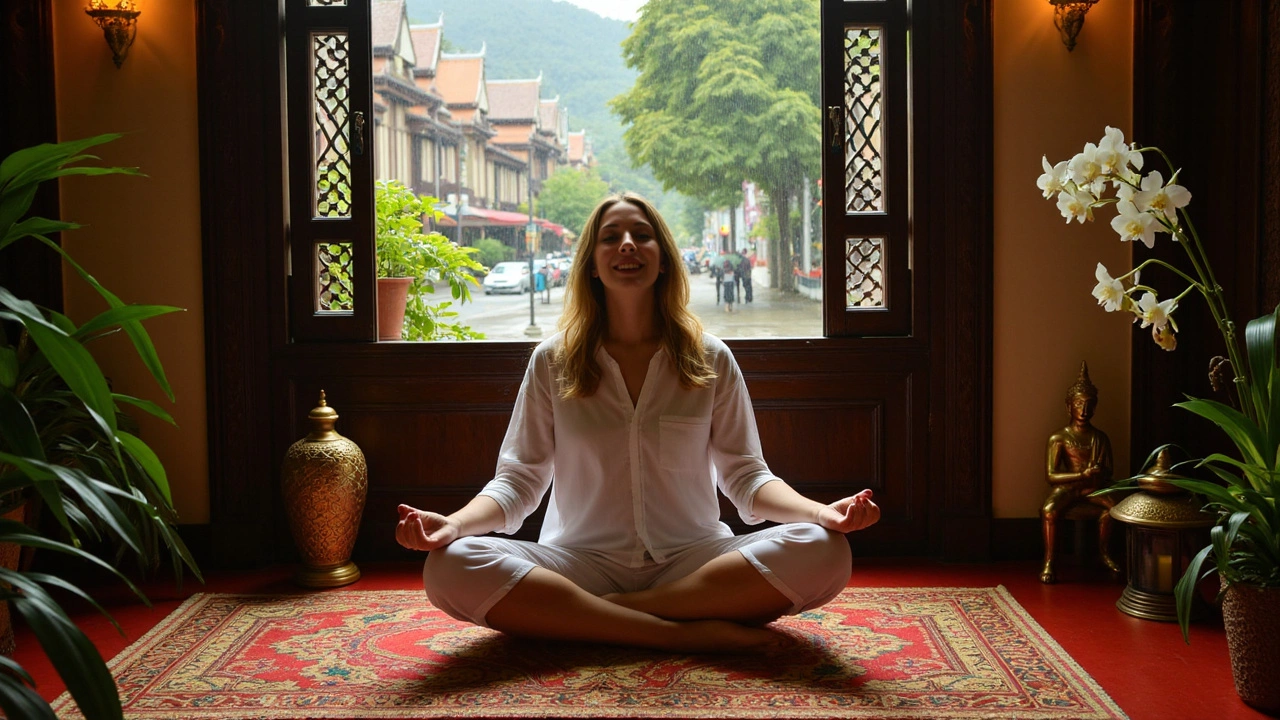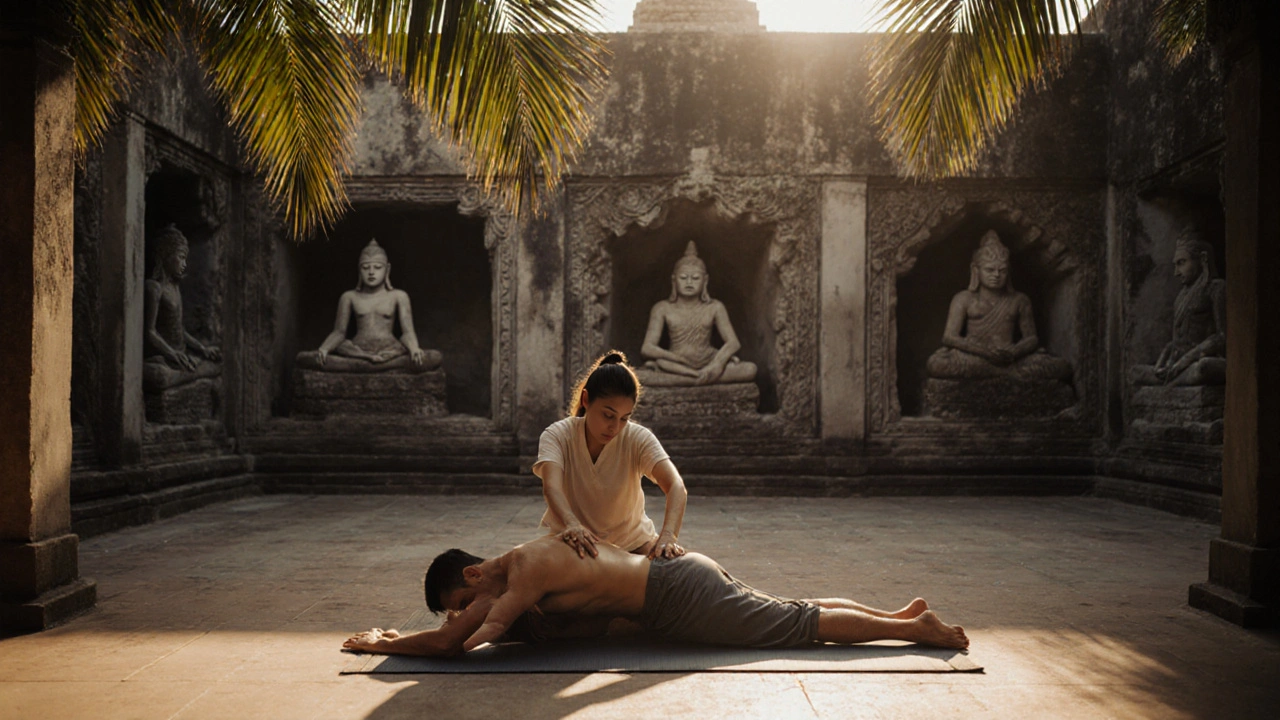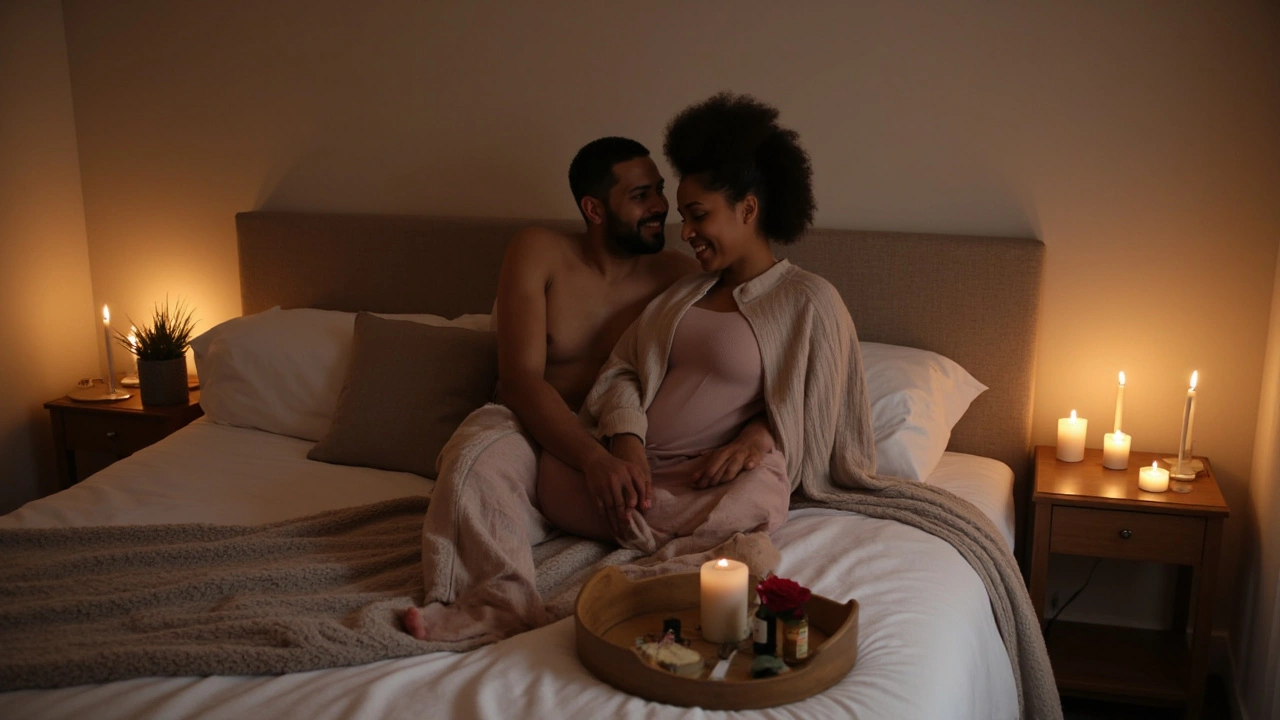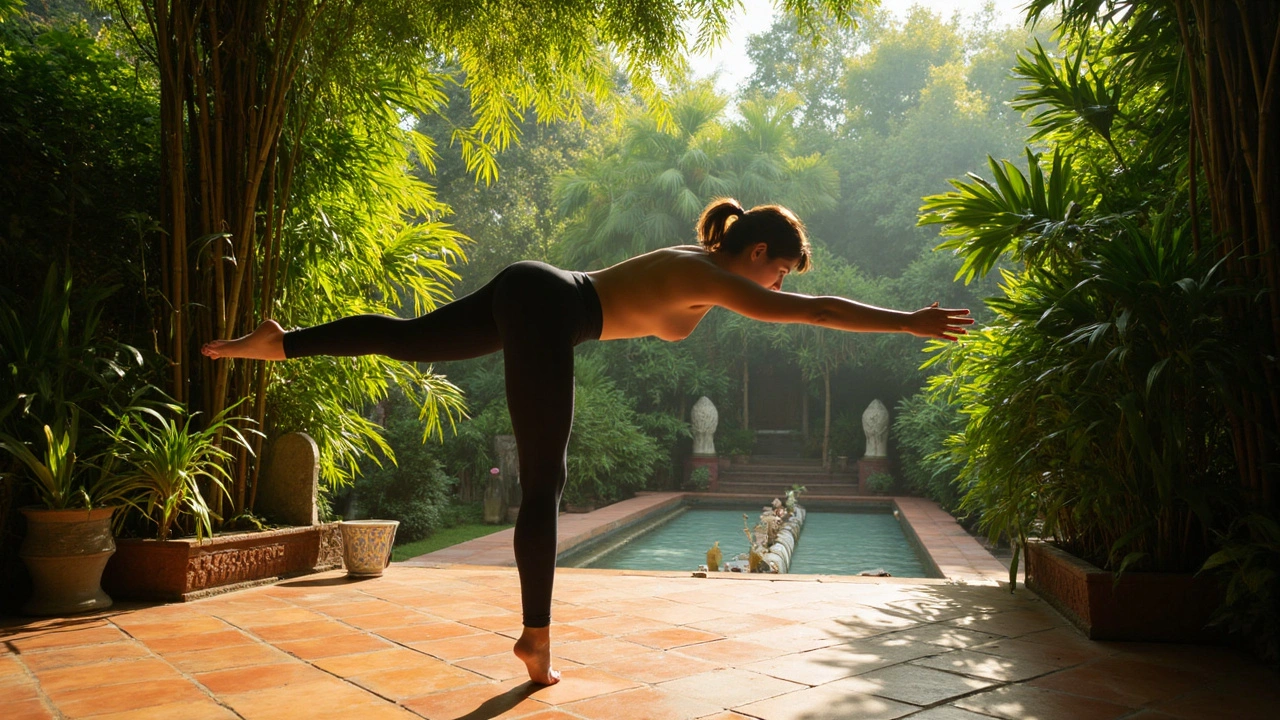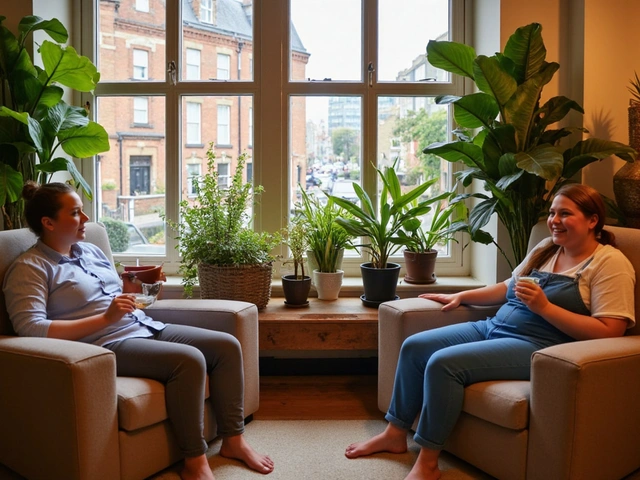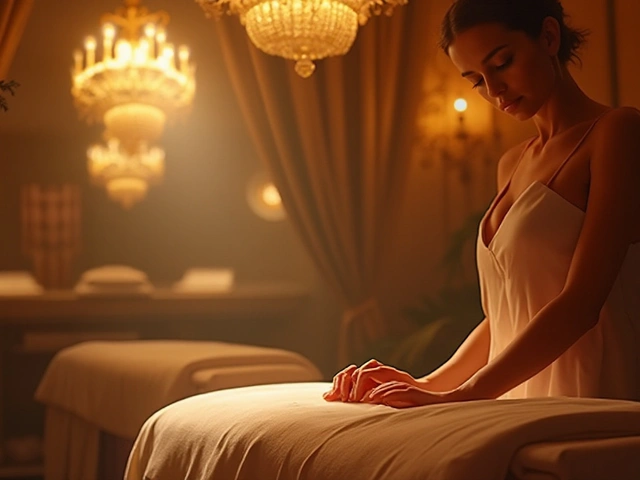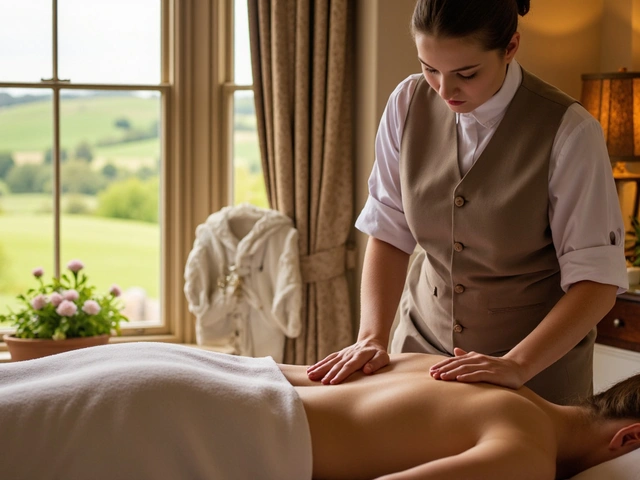Ever wondered why Thai massage is talked about with almost mythical enthusiasm? There’s nothing generic or dull here. Unlike regular massages where you’re just lying still, Thai massage gets your whole body moving, using stretches and pressure points that wake you up in the best way.
This isn’t just about working out knots. Thai massage digs deep into ancient traditions, making you feel like you’re part of a centuries-old wellness practice. Most places have you lying on a comfy mat instead of a massage table, and you’ll keep your clothes on—no awkward moments. If you’re a little nervous about what happens during a session, don’t stress. Most therapists will explain what they’re doing and check in with you, especially if it’s your first time.
Whether you want to melt away travel fatigue, loosen up after sitting all day, or just have a new cultural adventure, Thai massage delivers. It’s both relaxing and energizing, kind of like hitting the reset button. Stick around to find out how to spot a great Thai massage spot, what actually happens during a session, and how to get the most out of your visit.
- The Heart of Thai Massage
- Why Thai Massage Feels Different
- Finding Authentic Thai Massage
- Your First Session: Tips and Insights
The Heart of Thai Massage
Thai massage stands out because it combines strong hands-on work with mindful movement. It started in Thailand over 2,500 years ago, and local legend links it back to Shivago Komarpaj, who was the Buddha’s physician. Thai massage isn’t just a physical routine. It pulls in elements from yoga, acupressure, and ancient energy lines known as “Sen.”
So, what does that mean for you? The therapist uses their palms, thumbs, elbows, knees, and even feet to work on your body. You’re not passively zoned out like in a spa oil massage—you’ll be stretched and moved around to help unblock energy and boost flexibility. Some people call it "lazy yoga" because you get all the stretching benefits without lifting a finger.
The technique also follows the belief that keeping energy (called “lom”) moving throughout the body stops aches, stiffness, and stress from piling up. Most sessions run between 60 and 120 minutes, and some places even offer shorter 30-minute versions if you’re crunched for time.
Here’s something practical: Don’t show up on a full stomach. You’ll be twisted, pulled, and pressed, so you don’t want to feel uncomfortable. Arrive in loose, comfortable clothes—they’ll probably hand you a cotton set if you don’t have the right outfit.
Thai massage has exploded beyond Thailand’s borders. Recent numbers show there are more than 5,000 licensed Thai massage shops in Bangkok alone, and the global wellness industry ranked Thai massage among the top “authentic experiences” for travelers in 2024.
| Key Elements | Details |
|---|---|
| Origin | Ancient healing tradition from Thailand, over 2,500 years old |
| Key Features | Stretching, acupressure, movement along energy lines (Sen) |
| Session Length | 30-120 minutes, most common is 60 or 90 minutes |
| Attire | Loose clothing provided or wear your own |
| Global Reach | Over 200,000 Thai massage professionals worldwide |
If you’re seeking a real Thai massage experience, look for therapists trained at top schools like Wat Pho in Bangkok. These folks know their stuff and stick to the traditional techniques that built this craft. You don’t just get a massage, you tap into a piece of Thai culture that’s alive and thriving—whether you’re in downtown Chiang Mai or your hometown far from Asia.
Why Thai Massage Feels Different
Thai massage isn’t your typical spa routine, and you’ll notice that as soon as you walk in. Instead of lying face-down on a table with oils, you usually start fully clothed on a simple padded mat. The therapist uses their hands, elbows, knees, and even feet to press, stretch, and rock different parts of your body. Some people call it “lazy yoga” because you get all the stretching without doing any of the work yourself. It’s a game-changer, especially if you’re stiff or spend a lot of time at your desk.
This isn’t just about relaxation. Traditional Thai massage is rooted in ancient Thai medicine, dating back centuries. The main focus is on energy lines, called 'Sen.' The therapist works on these lines to help energy flow more freely, which is believed to fix blockages and leave you feeling more balanced. Yes, it can feel intense at times, but most people say they feel lighter and more flexible after a Thai massage.
Sessions can be tailored depending on your needs. If you’re after deep pressure, just mention it. Prefer something gentle? Your therapist will adjust. Don’t be surprised if you hear a few gentle cracks and pops during the session—totally normal, and most people find it satisfying.
- It involves dynamic movements and deep stretching that you probably won’t find in Western-style massages.
- Thai massage is often done on a mat, not a table, and you stay comfortably dressed—no slippery oils to deal with.
- Instead of working on just muscles, the focus is on energy lines, which gives the whole experience a holistic feel.
People travel to Thailand just for this experience, but you can find authentic sessions in cities all over the world. If you want a type of massage that leaves you feeling not just relaxed but actually recharged, this is it.

Finding Authentic Thai Massage
It’s easy to get overwhelmed by all those spas and massage shops, especially if you’re in a busy spot like Bangkok or Chiang Mai. But how do you know you’re getting the real deal and not just a quick rub that’s all style, no substance? First off, look out for places that advertise Thai massage as a core service—not just a footnote. Most authentic spots talk about their roots in traditional Thai techniques, often showing off certificates or even photos of their therapists in training programs.
Here’s something important: therapists at legit places usually have official Thai massage training, which involves hundreds of hours of learning at places like Wat Pho in Bangkok, known as the “mother temple” of Thai massage. You’ll often spot their training certificates hanging on the wall. If you don’t see any sign of actual training, or the staff can’t answer basic questions, it’s smart to move along.
Want to spot a trustworthy place? Here are some tips:
- Check reviews on Google Maps and TripAdvisor. People don’t hold back if they get a bad massage, so you’ll see honest feedback fast.
- Ask locals or your hotel. They know where the skilled therapists are, and where the tourists usually get ripped off.
- Notice the vibe when you walk in. Clean mats, fresh towels, and a quiet, respectful vibe are good signs. If it feels sketchy or rushed, trust your gut.
- Look up Thai massage associations like the Thai Traditional Medical Services Society. Their member lists are public, and those places have to meet strict standards.
If you’re really after Thai massage that’s true to its roots, steer clear of mega tourist chains. Small, family-run shops often care more about their reputation and deliver a deeper, more authentic experience.
Your First Session: Tips and Insights
Trying Thai massage for the first time? You’ll want to know exactly what’s coming so there are no surprises. Here’s everything you need to feel comfortable and get the most out of your experience.
First off, Thai massage isn’t like regular spa treatments. You stay fully clothed (think loose T-shirt and shorts – some places even lend you the gear), and you’ll be on a mat instead of a massage table. There’s no oil, just stretches and steady pressure.
Wondering what’s going to happen? Here’s a typical session breakdown:
- First greeting: Your therapist may greet you with a polite “wai,” the traditional Thai gesture with hands pressed together.
- Health questions: You might be asked about injuries, sore spots, or health issues. Speak up if something hurts or if you want lighter pressure!
- Assessment: The therapist checks your flexibility and might ask where you feel tight or tired.
- The massage: Expect gentle pulling, twisting, and rhythmic pressing with thumbs, elbows, knees, and even feet. Your body gets stretched and moved around – it’s like yoga without any effort from you.
- Final relaxation: Everything wraps up with a short period of rest so you can soak in the benefits.
Sessions last anywhere from 60 to 120 minutes. If you’re not used to being stretched, an hour is a good way to start. Drink plenty of water afterwards—your muscles will thank you!
Here’s a quick look at what to remember for your first Thai massage:
- Wear light, comfortable clothing. Avoid jeans or tight outfits.
- Arrive 10–15 minutes early to talk with your therapist and fill out forms.
- Speak up—your therapist won’t think it’s rude! Let them know if something’s too much.
- Eat light. A full stomach isn’t your friend during stretches.
- Relax and breathe deeply. Trust the process—awkward as it might feel at first.
Don’t just take my word for it. In a 2023 Bangkok wellness survey, 77% of first-time visitors said they felt more relaxed and flexible after a session, while 63% loved how energized they felt the next day.
| Session Length | Typical Cost (USD) | Recommended For |
|---|---|---|
| 60 minutes | $10–$25 | First-timers, short on time |
| 90 minutes | $15–$35 | Standard |
| 120 minutes | $20–$50 | Deep relaxation, regulars |
One last tip: if you enjoy the session, tips aren’t required but are always appreciated. About 50–100 Thai Baht (around $1.50–$3) is the norm for a good massage. With this info, you’re set to go from rookies to pro when it comes to Thai massage. Enjoy your session!
